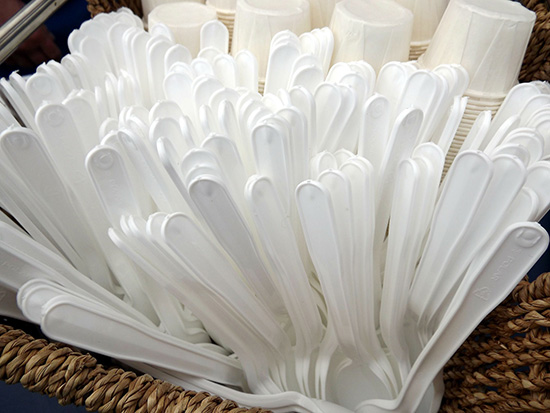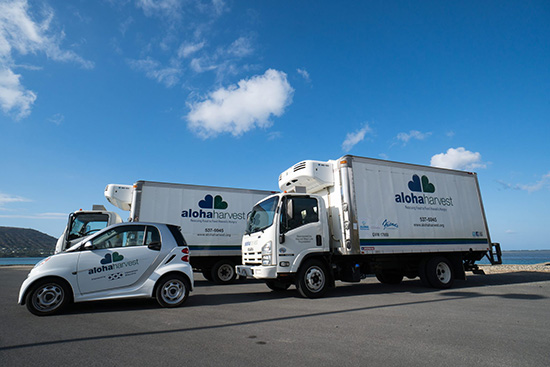
Under the cover of darkness, two men armed with shovels quietly work in downtown Honolulu. The still of the night is pierced occasionally by the gentle roar and whoosh of a passing car and the clinks and scratches of a shovel meeting gravel. Although faced with legal and physical risk, these men simply cannot resist the temptation to dig for treasure.
“You’ll never believe what was buried right under your feet,” Jon Patrick Whitaker says.
Whitaker and Joseph Petaia are participants in O‘ahu’s underground archaeology scene. They do historical research to find dig sites, and they keep tabs on new construction around town for the sole purpose of digging the foundations in search of 100-year-old pieces from a bygone era in Hawai‘i’s colorful history.
At one time, Hawai‘i was more self-sufficient than it is now. Before the age of rapid shipping, the islands had their own dairies, soda shops, distilleries, breweries and drugstores.
Many companies packaged their goods in glass vessels bearing their names and locations.
As glass was to consumers as plastic is today, these bottles were thrown away as nothing more than garbage. But since glass can take a million years to decompose, these bottles remain time capsules.
Though bottle digging has been going on elsewhere for decades, it only caught on in Hawai‘i during the 1960s.
Some findings are more significant than others, explains Mike Kapili, former president of the Honolulu Historic Bottle Club. He says that a 1960s dig of the Waialua Soda Works dump revealed thousands of dollars’ worth of rare 1800s bottles, along with a few that had never been seen before.
Due to their small production numbers and exclusive distribution in the islands, Hawaiian bottles can be very desirable, commanding top dollar in collectors’ markets.
Kapili says the most expensive Hawaiian bottle he ever purchased was a rare torpedo-shaped soda bottle for $7,500.
Whitaker and Petaia say that every find, regardless of its monetary value, is a piece of Honolulu’s history with a story to tell.
Some Hawaiian bottles, for instance, have the letters TH written on them, an abbreviation for the Territory of Hawai‘i. Older bottles have HT for Hawaiian Territory or HI for Hawaiian Islands. The oldest bottles have the inscription SI on them for Sandwich Isles, after the Earl of Sandwich.
At a dig in Kaka‘ako last December, Whitaker and Petaia found a bottle in very rough condition with its neck broken off and the embossed letters spelling “Tahiti lemonade Honolulu TH.”

The site also produced shards of Chinese pottery and a few intact Chinese vessels such as bean pots, shoyu pourers, even a decorative blue and white glazed vase. With all the clues, it was determined that the site must have been a Chinese settlement from the mid-1800s to the early 1900s.
“The forgotten history and the nostalgia behind some of these finds keep us digging. That and the thrill of the hunt of course,” Whitaker said. “It just makes my imagination run wild.”
“It’s crazy to think one of these bottles could have very well belonged to one of the pirates of the 1884 raid on Honolulu before having its contents drank and being cast aside as they made their retreat,” Petaia added.
While some people might think it a shame that such history should be revealed to and kept by persons who are not professionals in the field of archaeology, WCC professor, archaeologist and historian Floyd McCoy says, “It’s good that people are doing this.”
He just hopes these individuals share their findings, saying that they would not need to surrender the objects but just share the information so that the community can learn from it. McCoy, however, points out that valuable information can sometimes be lost by removing an artifact. Where an object was found and what was around it can reveal a lot.
However, if Whitaker and Petaia and others in the underground archeology scene don’t dig up this history, many stories and relics would remain under concrete foundations forever.
The two men add that there is an unwritten rule among construction workers to ignore archaeological findings for fear of a curse or that their job site will be shut down for an archaeological survey.
Both acknowledged that so much history is left ignored never to be discovered by professional archaeologists simply to save construction companies from breaching their deadlines.
So the next time you see a foundation being dug, use your imagination and you may just find yourself 10 feet under Honolulu’s streets pulling out pieces of long forgotten Hawaiian history.
by Rick Oania-Elam, Special to Ka ‘Ohana




